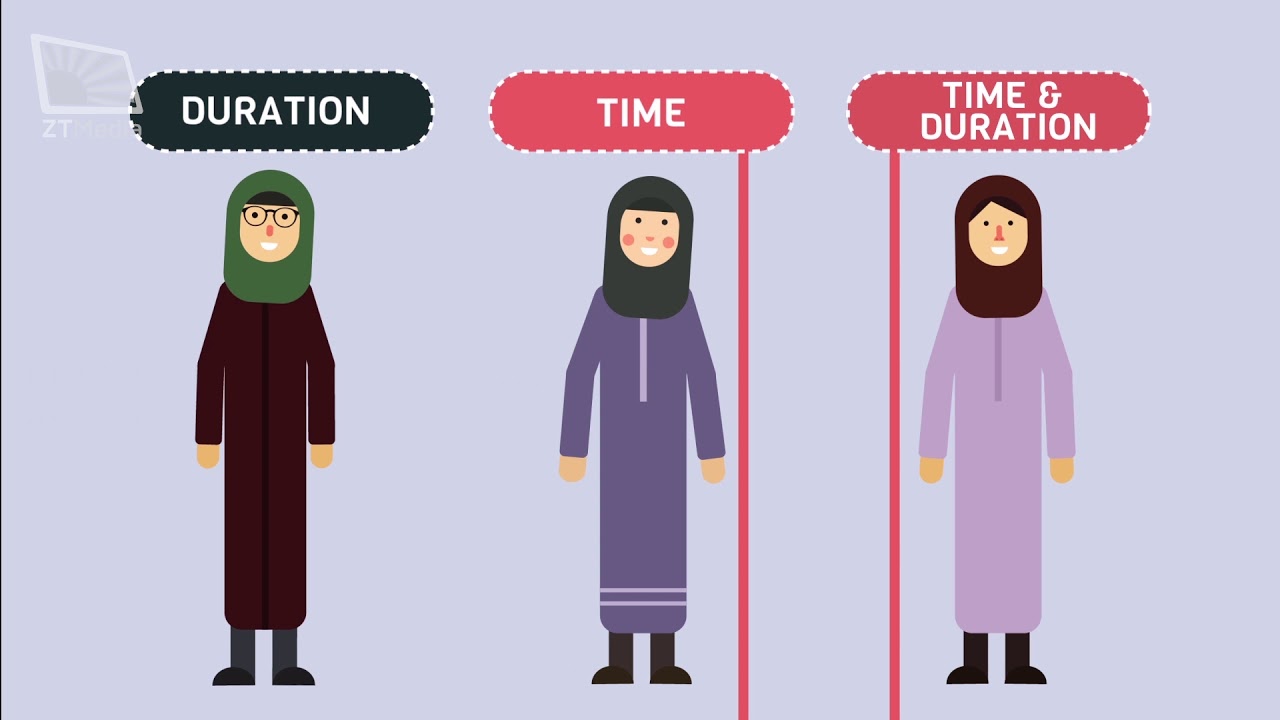Ahkam in Brief – Haydh
Almighty God has created the female to be capable of carrying the loftiest creation, another human being. He has designed the anatomy of her body to suit this purpose.
According to the Islamic laws, the female body experiences three status:
- Haydh or the monthly period,
- Istihada, and
- Nifas.
In this episode, we will explain Haydh and its rules.
Before we begin, let us review the responsibilities of a woman in Haydh:
- It is not permissible for her to perform the acts of worship that need Tahara, such as the daily prayers, fasting, Itikaf and the Tawaf.
- She must make up for the fasts she missed due to Haydh. It is not required for her to make up the missed daily prayers.
- She is not allowed to touch the writing of Quran or the name of Allah.
- She is not allowed to enter Masjid al-Haram in Mecca, and Masjid al-Nabi in Medina.
- For other mosques and the shrines of the Holy Imams, peace be upon them, she can cross or traverse through them, but without lifting away or placing anything there.
- She is not allowed to recite the verses of the holy Quran that have a Wajib Sajda. These are in Surahs Najm, Alaq, Sajda and Fussilat.
- She must not have sexual intercourse.
- In most cases, a divorce cannot take place during Haydh.
- At the end of her Haydh period, to become Tahira, she has to perform Ghusl.
So, when is a lady considered to be in Haydh?
There are five essential conditions for a woman to be in the state of Haydh:
- First condition: to have blood discharge from the womb. This blood is usually warm, black or red in color, and is discharged with a pressure and a little irritation.
- Second condition: it should be seen between the age of puberty and before menopause, which is by reaching sixty Hijri years.
- Third condition: there should be at least a 10-day gap from when her previous Haydh finished.
- Fourth condition: the discharge should continue for at least 3 days and the maximum duration for Haydh is 10 days.
- Fifth condition: The discharge of this blood should flow continuously for the first 3 days.
If it is interrupted for an hour or if it’s frequently interrupted, it won’t be considered Haydh. But if the interruption is very little that women do not usually consider it such, it will be Haydh.
So, as we said, for a lady to be sure that she’s in Haydh, she has to see the discharge for at least three consecutive days. The question now is how should a lady count these three days? Is it by hours?
If the blood appears during the daytime, which starts from morning Adhan, the counting will be by hours. So, in this case, the Haydh for her should continue 72 hours from the starting hour.
But if it appears at night, which starts from Maghrib Adhan, she has to dismiss that night, and start the calculation from next morning Adhan and till the same day sunset, it will be one day for her. Then she counts two other days from the sunset.
So, on the third day sunset her third day will end.
In this way, she will be certain that she is in the state of Haydh.
A question, is there another way to know the status, rather than waiting for three days?
Since most ladies have a habitual cycle, it will be easier for them to recognize the start of Haydh by determining their pattern or cycle.
The types of Habits:
- Habit of duration: those for whom the duration of Haydh was the same in two cycles. For example, in each cycle she had the Haydh for 6 days.
- Habit of time: those for whom their Haydh starts at a particular time, for two cycles. For example, each time she has it on the 20th of the month.
- Habit of time and duration: those whom Haydh starts on a specific day and continues for a similar duration, for two cycles.
And there are three types of people with non-habit cycle
- Mubtadiyah or a beginner: is one who sees the blood for the first time.
- Mudhtaribah or Disordered duration: When a woman has the Haydh but doesn’t have any pattern/habit.
- Nasiyah or forgetful: is one who has a habit, but has forgotten its pattern.
As we said earlier, identifying these habits will help a lady to know the beginning of her Haydh.
To know the beginning of Haydh:
- For those in habit of time or time & duration, once she sees the blood at her time, whether it has the signs of Haydh or not, it is Haydh. The same applies if she saw the blood one or two days before her usual timing.
- For those in habit of duration, the beginner or the disordered, if the discharge has the signs of Haydh, meaning it was warm, black or red, and with irritation, it is Haydh. If the blood doesn’t have the signs of Haydh, like being pink or light brown, then for three days she has to take precaution.
Precaution here means to follow the rules of both Haydh and Istihadha at the same time. So, she has to perform the duties of Istihadha like fasting and praying with the needed Ghusls and Wudhu. And she has to refrain from the forbidden acts for Haydh like sexual intercourse or sitting in mosques. Also, Later she has to make up for the fasting days.
Question, what if the discharge was disrupted during the Haydh?
If a big interruption occurs during the first three days, then it won’t be considered Haydh. But a minor interruption can be ignored.
However, if she had Haydh discharge for three days without interruption, then for example it stopped for one day and then started again, till day 10, it’s still considered Haydh. For those days which discharge was paused, she has to take precaution and refrain from forbidden acts for a lady in Haydh and perform her obligatory regular duties.
Knowing the end of Haydh:
During the ten days of Haydh, if the blood discharge stops completely, then the period ends. So, once she is certain about this, she has to perform the Ghusl and practice her regular religious duties.
- If she has not become certain, and it is possible that there might be some blood remaining internally, she has to examine for it by inserting a piece of cotton and wait for some time to find out.
- If the cotton is clean, the Haydh is finished. But if it is not clean, she has to wait till it ends.
Bear in mind that the maximum duration of Haydh is ten days.
A question, what if the discharge continued after the 10th day?
If the discharge continued for more than 10 days, the lady has to review the status of the previous days, in order to distinguish between her Haydh and Istihadha days.
How does she do this?
This issue has a lot of details and you can find these in the Islamic laws book. But knowing some general guidelines will help you to find your answer easier.
- Guideline number one: referring to the habit. This means the lady of habit of time, goes back to her very specific date and if the date that blood was seen is compatible with her date, then that’s the beginning of her Haydh. And for the lady of habit of duration, the number of Haydh days will be equal to her duration number.
- Guideline number two: If the previous guideline didn’t help, she has to check the signs of the blood seen on each day. If the signs varied, those days that are similar to Haydh, are Haydh, considering that any discharge to be considered as Haydh should last at least 3 days and a maximum of 10 days.
- Guideline number three: If the signs of the blood didn’t help either, she should consult her relatives. If the female members of her family have a similar duration, she should follow their pattern.
- Guideline number four: If the family members have different durations, then in every month she is free to choose a number between 3 to 10 days as Haydh. It is Mustahab or recommended to consider 7 days as Haydh.
These are the general guidelines and one should to check the details of this issue according to their jurist.
A question, is it possible to have more than one Haydh in a month?
Between two cycles of Haydh, there should be at least a 10-day gap.
So, if during a month, she has two cycles and both had the signs of Haydh, and there is a 10-day gap between them, both are Haydh.
For the ease of learning, we have tried to summarize the general rulings of Haydh in few minutes. A comprehensive understanding needs further study and the assistance of an expert.

